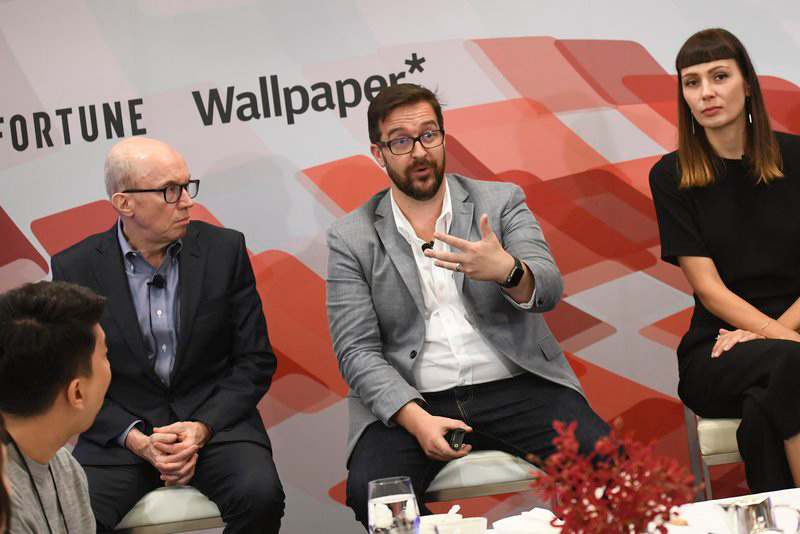
|
麦肯锡设计指数是一个对设计的商业价值进行量化的指标。在该指数中得分最高的那些公司,其业绩表现要比行业基准增长率高出一倍。不过,你怎样才能准确地衡量设计?好的设计究竟是一个可量化的业务指标,还是“妙手偶然得”?企业怎样才能将设计师和设计思维大规模地整合到企业中?
3月初,由《财富》杂志主办的“头脑风暴设计峰会”在新加坡召开,会议吸引了很多产品设计师、设计顾问、战略师和企业家参加。会上,《财富》杂志的CEO穆瑞澜向麦肯锡的几位设计专家提出了这些具有挑战性的问题。与会专家包括麦肯锡的合伙人罗德·法默、马特·杜拉克,以及该公司的体验设计总监金姆·穆勒。
法默首先解释了“规模”一词在设计语境下的含义。他表示,设计的规模化,是指“构造让企业能以统一和可持续的方式,在更大的范围内进行设计的能力”。他还表示,对设计的成果进行量化,特别是量化它对企业业绩的影响,是实现这个目标的唯一途径。
杜拉克表示,企业增长的一个关键时刻,就是“当创始人终于开始划分职责,将部分工作分配给其他人的时候”。这时,规模化就有可能成为一种必然。
在麦肯锡的专家介绍了衡量设计的效率的各种方法之后,观众们也在提问环节中向专家提出了一些自己的企业遇到的问题。在这个环节中,专家们再次探讨了设计的定义,并表示企业必须将一名训练有素的设计师的设计能力与设计思维在不同业务领域的应用区分开来。
为了说明企业可以如何利用设计型思维实现规模化,穆勒举了一个披萨零售商的例子。这家披萨公司面临着来自于快递领域的创业公司的激烈竞争,这时麦肯锡的一个小团队加入了进来。五个星期后,他们开发了一种最小规模的产品——它虽然个头最小,但依然能给顾客带来价值。他们给它取名叫“当日披萨”。
首先,这家公司向一家商店的10%的顾客提供了这种最小份的披萨,然后慢慢地解决产品初步推出后发现的问题。(比如他们还对披萨的照片进行了A/B测试,最后决定重新拍摄公司使用的所有披萨图片。)穆勒表示:“就这样一步步地,我们知道了我们需要的究竟是什么。”
不过,法默也提醒观众,规模化只是达到目的的一种手段。“你要非常清楚你的战略意图。你为什么要扩大规模?清楚这一点,你就会得更多的成功。”(财富中文网) 译者:朴成奎 |
Companies with top scores in the McKinsey Design Index, which quantifies the business value of design, outperformed industry-benchmark growth by as much as two to one. But how exactly do you measure design? Is good design a quantifiable business metric, or is it something more serendipitous? How can businesses successfully integrate designers and design thinking into their organizations at scale?
These challenging questions were put to a panel of design experts from the global consulting firm McKinsey & Company by Fortune chief executive Alan Murray and an engaged audience of product designers, design consultants, strategists, and business owners. The session took place last Wednesday at Fortune’s Brainstorm Design conference in Singapore; McKinsey associate partners Rod Farmer and Matt Durack were joined by the firm’s experience design director, Kim Müller.
Farmer kicked off the conversation by explaining what scale actually means in this sense: “To build capabilities that enables an organization to design at a larger extent in a uniform and sustainable way.” He also went on to explain how quantifiable impact—actually measuring the impact on the bottom line—is the only way to achieve this.
The key moment for growing companies is “when the founder finally has to split roles and delegate parts of their job to other people,” Durack said. That’s when scale has the potential to become a liability.
After a quick dive into the various methods that McKinsey recommend for measuring the effectiveness of design, the audience were asked to put their own business problems to the panel. The discussion then moved on to the definition of design and a need to separate the craft of a trained designer from the application of design thinking across different business disciplines.
To give a practical example of what scaling a business using design-led thinking, Müller explained a recent project working with a pizza retailer. The pizza firm was struggling in the face of competition from delivery startups, so a small team from McKinsey went in. After five weeks, the group developed a minimum viable product—the smallest thing they could build that delivers customer value—called Pizza of the Day.
The retailer launched the offer to 10% of customers connected to one store, then slowly honed the issues with that initial offer. (An example: They conducted A/B testing on photos of pizza and decided to reshoot all of the pizza imagery used by the business.) “By going step-by-step, we knew what we needed,” Müller said.
But scale is a means to an end, Farmer reminded his audience. “Be very clear about your strategic intent,” he said. “Why do you want to scale? Be very clear about that, and you’ll have a lot more success.” |






